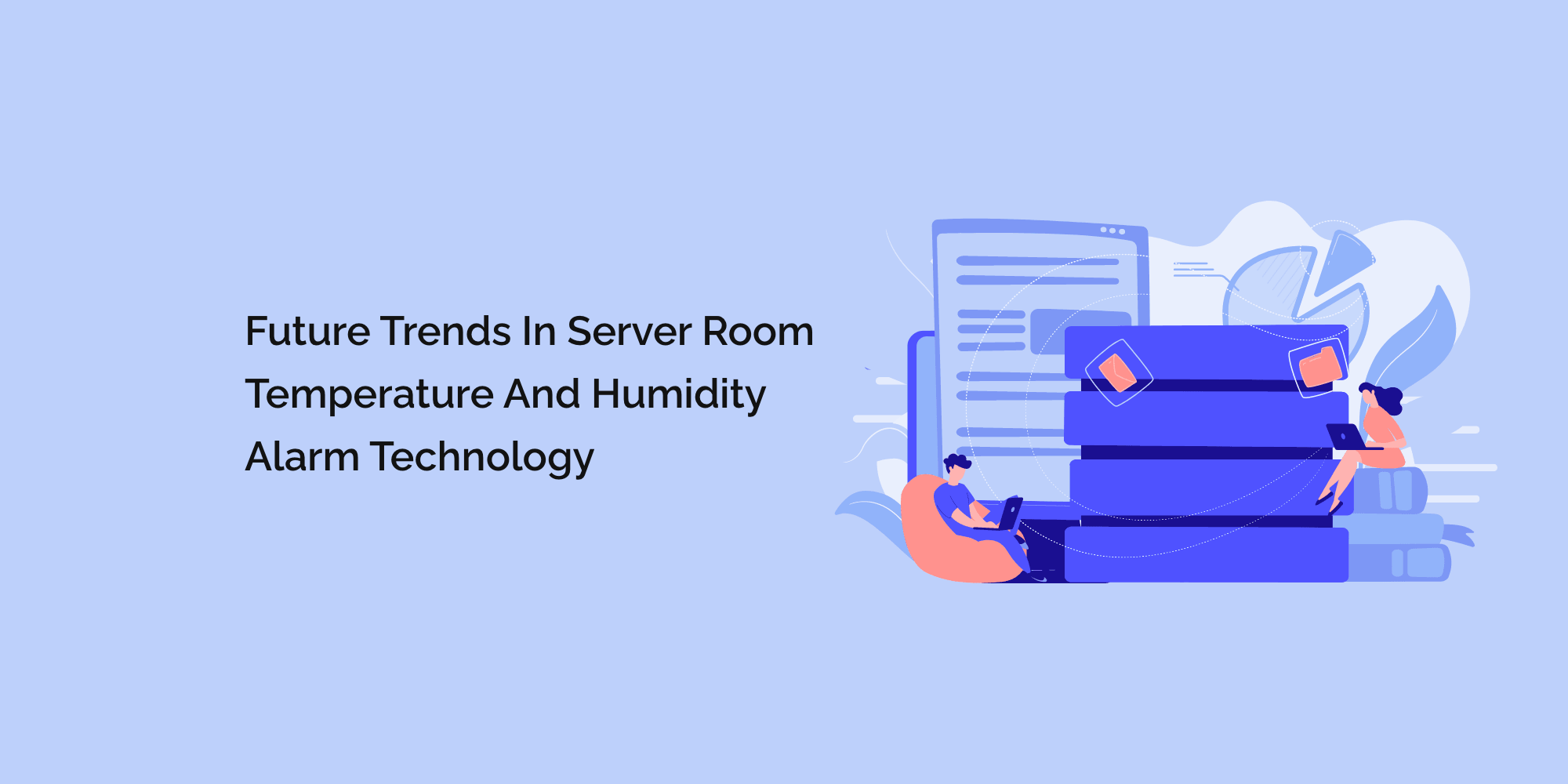In today's digital era, server rooms play a crucial role in housing and maintaining the infrastructure that supports various online services. Temperature and humidity control are critical factors in ensuring the optimal performance and longevity of servers and networking equipment.
With the rapid advancements in technology, the future of server room temperature and humidity alarm systems promises exciting developments that will revolutionize how these environments are monitored and protected.
This blog explores the emerging trends and innovations in server room temperature and humidity alarm technology.
Internet of Things (IoT) Integration
The Internet of Things (IoT) has transformed numerous industries, and server room monitoring is no exception. IoT integration allows for the seamless connection of temperature and humidity sensors to a centralized monitoring system. This connectivity enables real-time data collection, analysis, and alerts, providing administrators with valuable insights into server room conditions. IoT-based solutions offer enhanced scalability, remote monitoring capabilities, and predictive maintenance features. The integration of IoT technology in server room temperature and humidity alarm systems will undoubtedly be a major trend in the future.
Artificial Intelligence (AI) and Machine Learning (ML)
Artificial intelligence and machine learning technologies are revolutionizing various sectors, and their impact on server room monitoring is significant. By leveraging AI and ML algorithms, temperature and humidity alarm systems can analyze vast amounts of sensor data to detect patterns, identify anomalies, and predict potential equipment failures. These intelligent systems can learn from historical data, making them more accurate in forecasting and proactive in raising alerts. AI and ML-powered alarm systems will enhance server room efficiency, reduce downtime, and optimize energy consumption in the future.
Edge Computing
Edge computing is gaining popularity as organizations strive for faster response times and reduced network latency. In server room monitoring, edge computing involves processing the data from temperature and humidity sensors locally, within the server room itself, rather than sending it to a centralized cloud-based system. This approach reduces data transmission delays and ensures real-time monitoring and alerts. Edge computing combined with IoT-enabled sensors will lead to more robust and efficient server room temperature and humidity alarm systems.
Wireless Sensor Networks
Traditional wired sensor systems can be complex to install and maintain, requiring extensive cabling infrastructure. However, the emergence of wireless sensor networks simplifies the deployment of temperature and humidity sensors in server rooms. Wireless sensors are cost-effective, easy to install, and provide flexibility in sensor placement. They eliminate the need for extensive wiring, making it easier to adapt to changing server room layouts. Future trends will see widespread adoption of wireless sensor networks, enhancing the scalability and ease of maintenance for server room temperature and humidity monitoring.
Predictive Analytics and Remote Monitoring
Predictive analytics and remote monitoring capabilities will continue to evolve in server room temperature and humidity alarm technology. These features enable administrators to anticipate and address potential issues before they escalate. Predictive analytics algorithms can detect patterns, correlations, and trends in sensor data to forecast potential environmental risks. Remote monitoring empowers administrators to monitor server rooms from anywhere, receive alerts, and take immediate action. The combination of predictive analytics and remote monitoring ensures proactive management of server room conditions, reducing downtime and minimizing the risk of equipment failures.
Energy Efficiency and Sustainability
With growing concerns about energy consumption and environmental impact, future trends in server room temperature and humidity alarm technology will focus on energy efficiency and sustainability. Innovative solutions will integrate energy consumption monitoring features, enabling administrators to identify opportunities for optimization. This data-driven approach will facilitate the implementation of energy-efficient practices, such as dynamic cooling and optimized airflow management. By reducing energy consumption and carbon footprint and adopting sustainable practices, server room temperature and humidity alarm systems will contribute to a greener and more environmentally friendly future.
Enhanced User Interfaces and Visualization
The user interface and visualization of server room temperature and humidity alarm systems are evolving to provide administrators with more intuitive and comprehensive insights. Future trends will witness the development of user-friendly dashboards that offer real-time visualization of server room conditions. These interfaces will display key metrics, historical trends, and alerts in a visually appealing manner, making it easier for administrators to monitor and analyze data. Advanced visualization tools, such as 3D representations and augmented reality overlays, may also emerge, providing a more immersive and interactive monitoring experience.
Integration with Building Management Systems
Server rooms are part of larger building infrastructures, and integration with building management systems (BMS) is becoming increasingly crucial. Future trends in server room temperature and humidity alarm technology will focus on seamless integration with BMS platforms. This integration allows for centralized monitoring and control of server room conditions alongside other building parameters, such as HVAC systems and energy management. By synchronizing server room monitoring with the overall building infrastructure, administrators can achieve better coordination, efficiency, and optimization.
Enhanced Security and Data Protection
Server rooms house critical data and infrastructure, making security and data protection top priorities. Future trends in temperature and humidity alarm systems will incorporate enhanced security features to safeguard server room environments. This may include encrypted data transmission, multi-factor authentication, and intrusion detection capabilities. Additionally, strict access control measures and audit trails will be implemented to ensure that only authorized personnel can interact with the monitoring system. By integrating robust security protocols, server room temperature and humidity alarm technology will provide comprehensive protection against unauthorized access and data breaches.
Conclusion
As the demand for efficient and reliable server room temperature and humidity monitoring continues to grow, the future of alarm technology holds immense promise. The integration of IoT, AI, and ML, along with edge computing, wireless sensor networks, predictive analytics, and remote monitoring capabilities, will revolutionize how server rooms are managed. Energy efficiency, enhanced user interfaces, integration with building management systems, and improved security will further enhance the functionality and reliability of these systems. By embracing these future trends, organizations can ensure optimal server room conditions, minimize downtime, and protect their critical infrastructure in an increasingly digital world.








